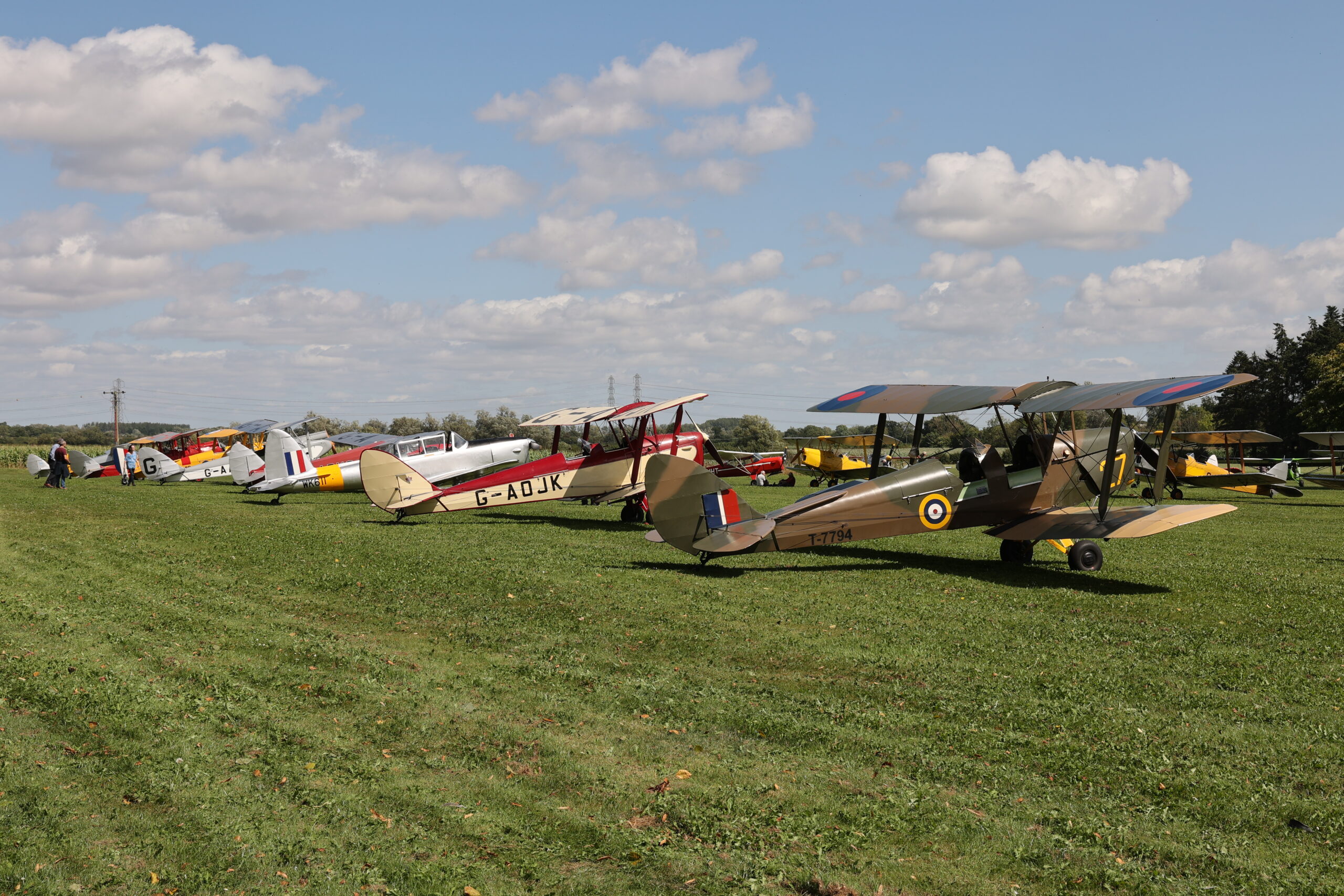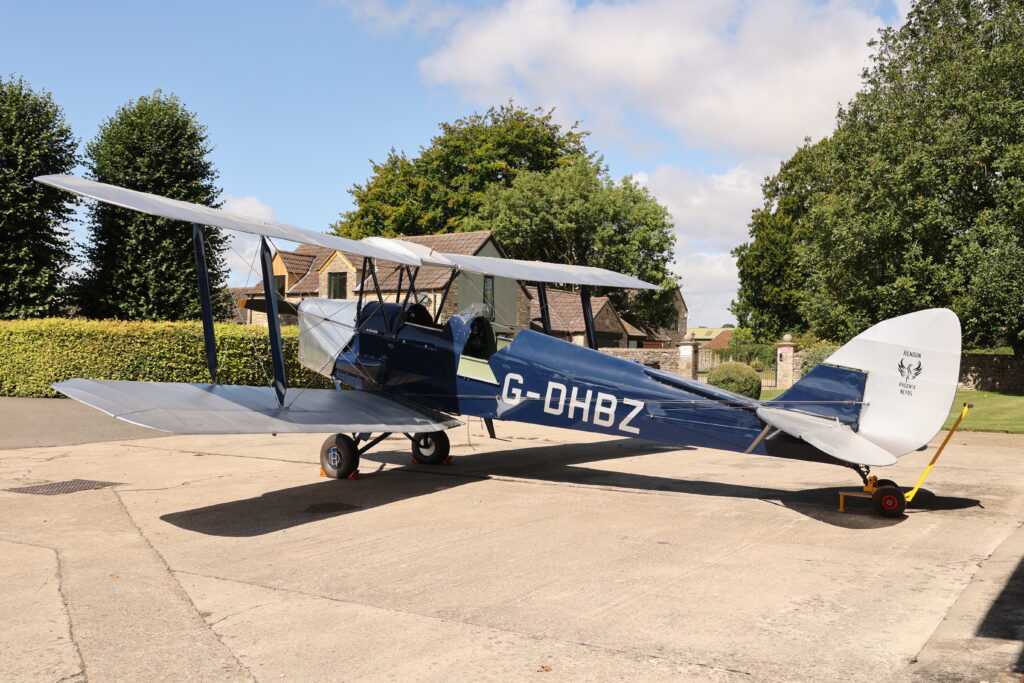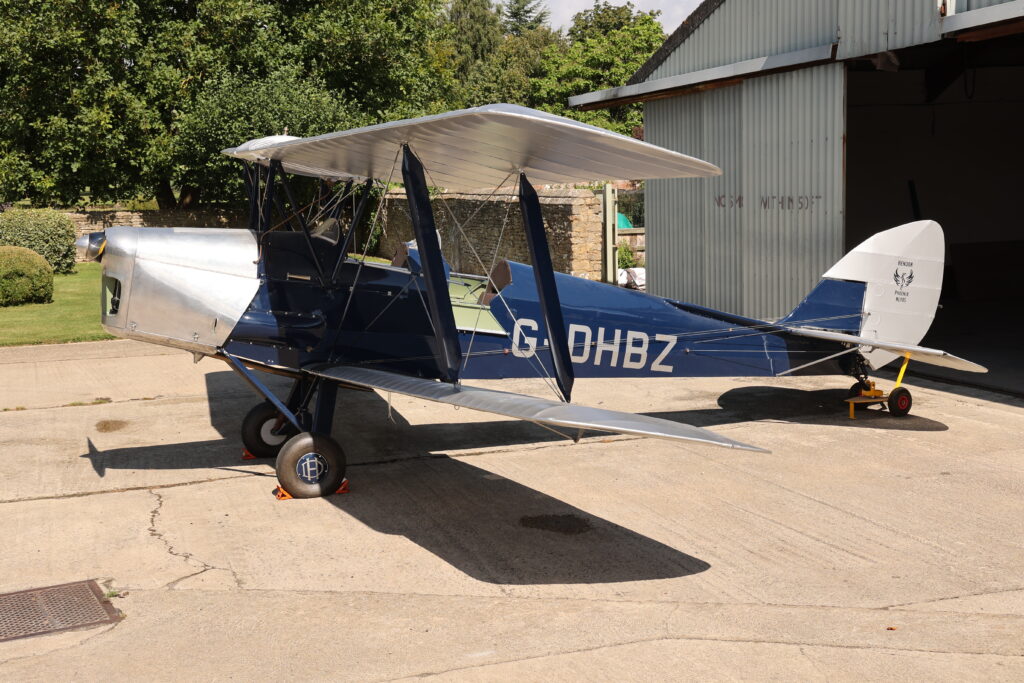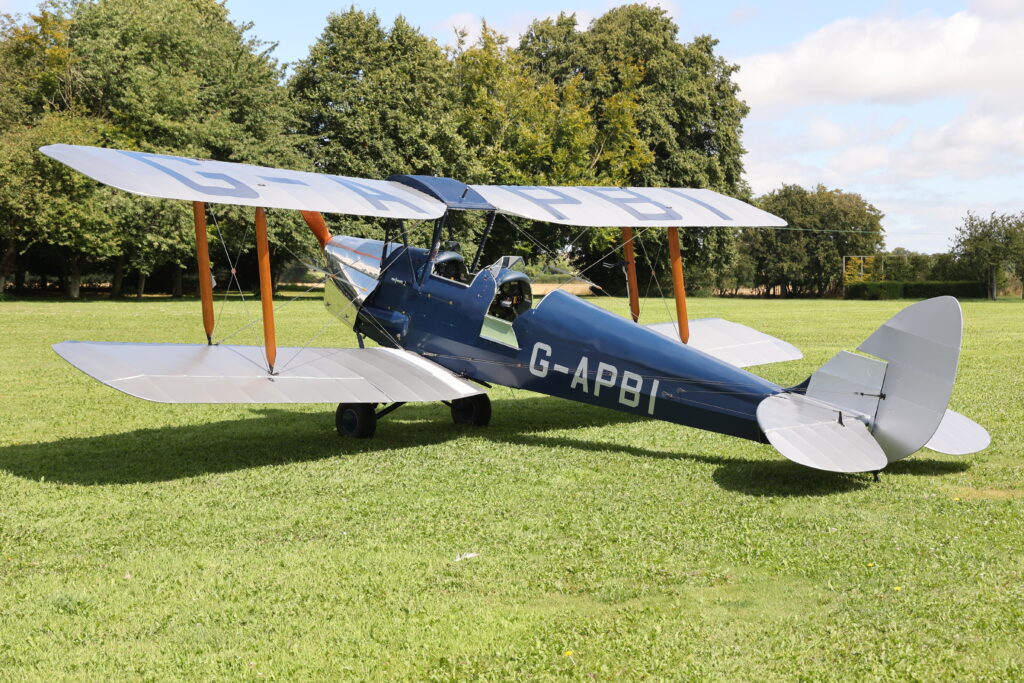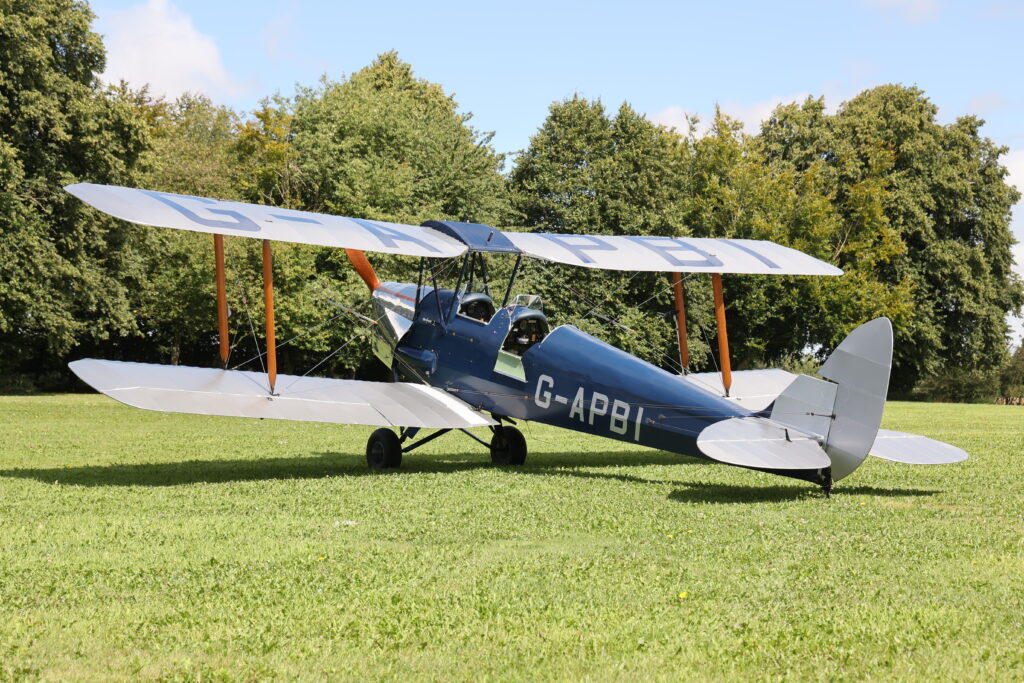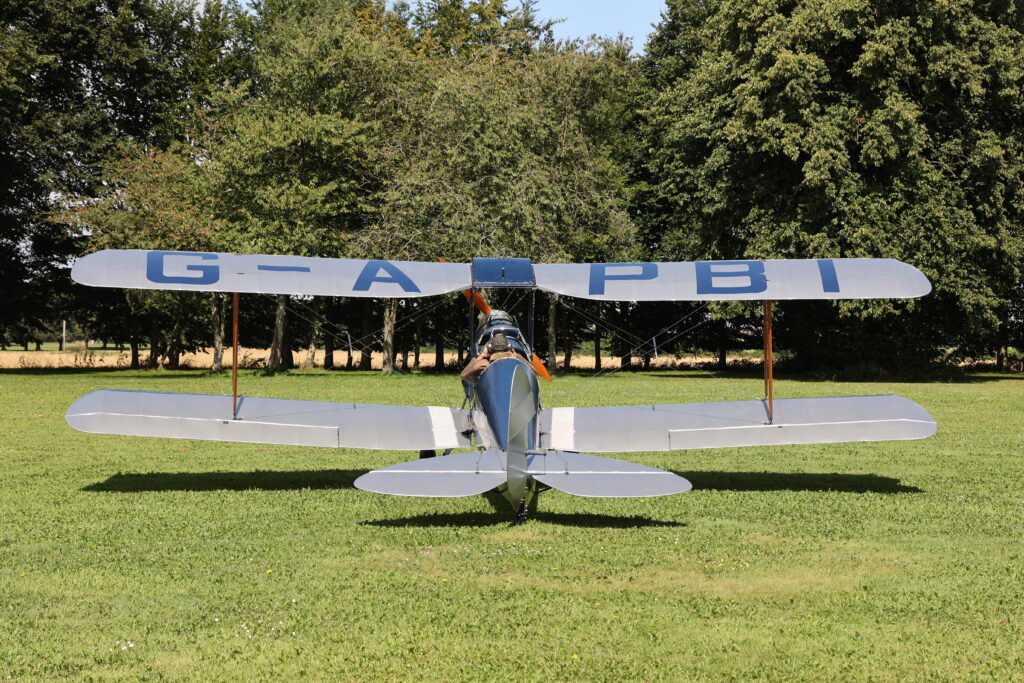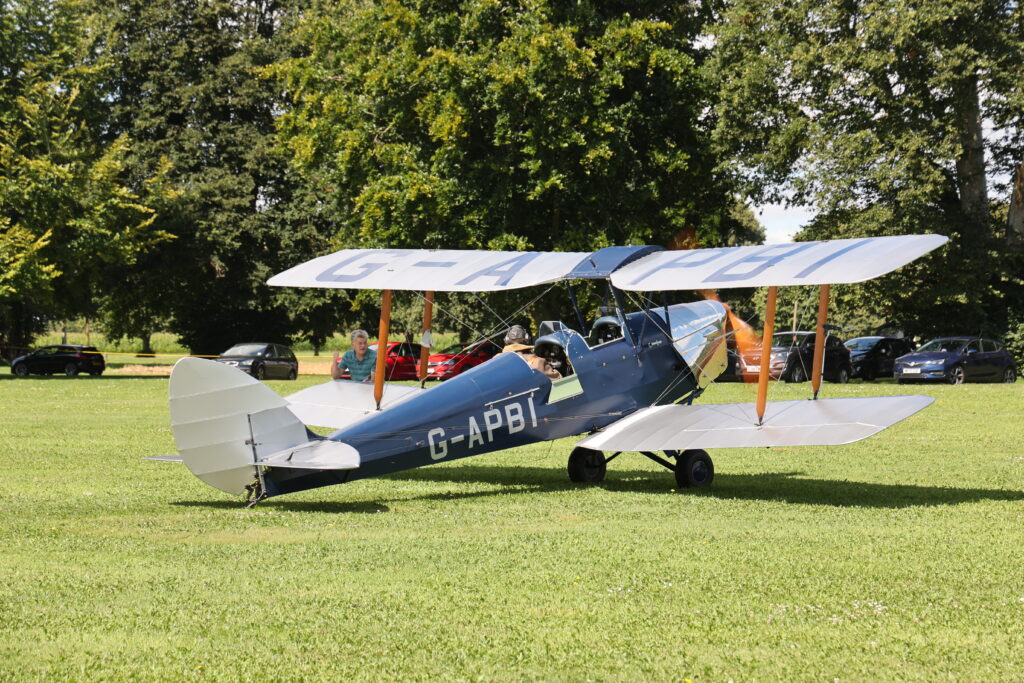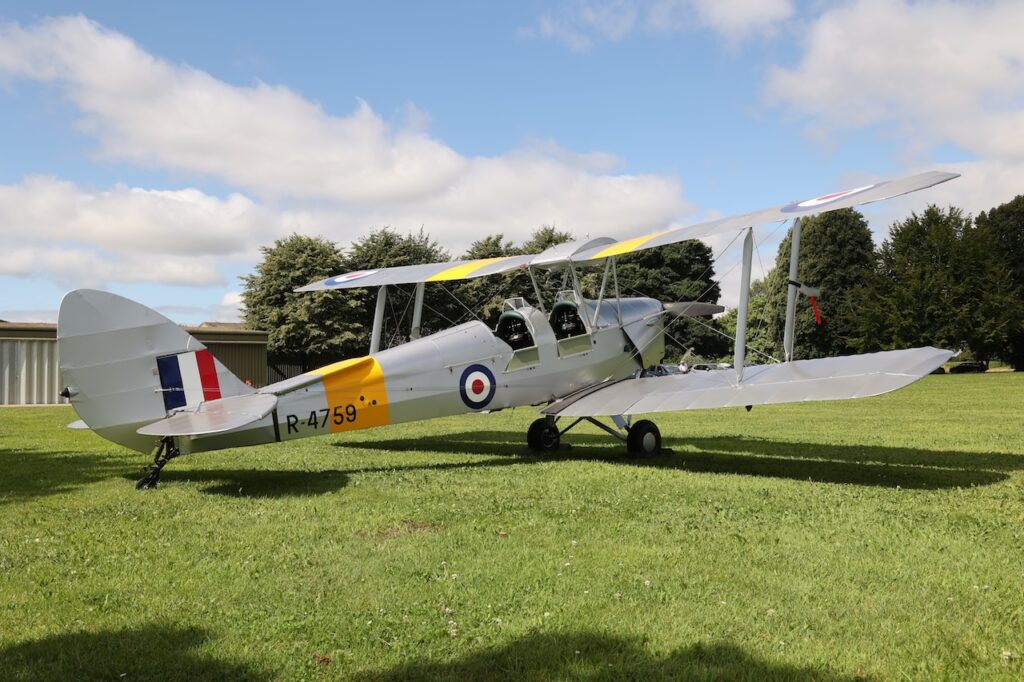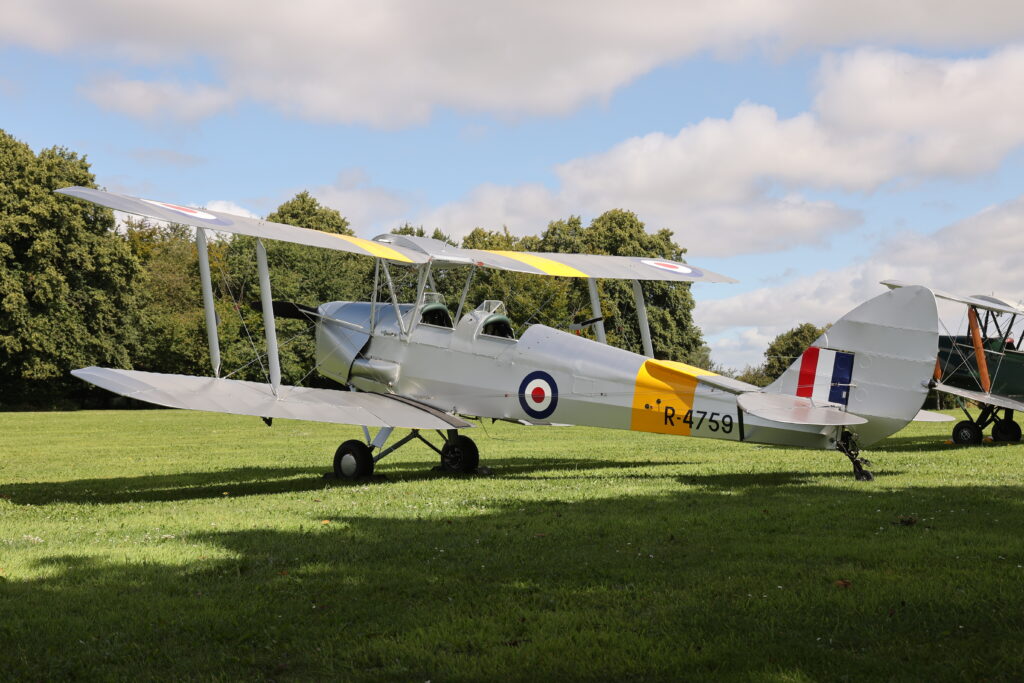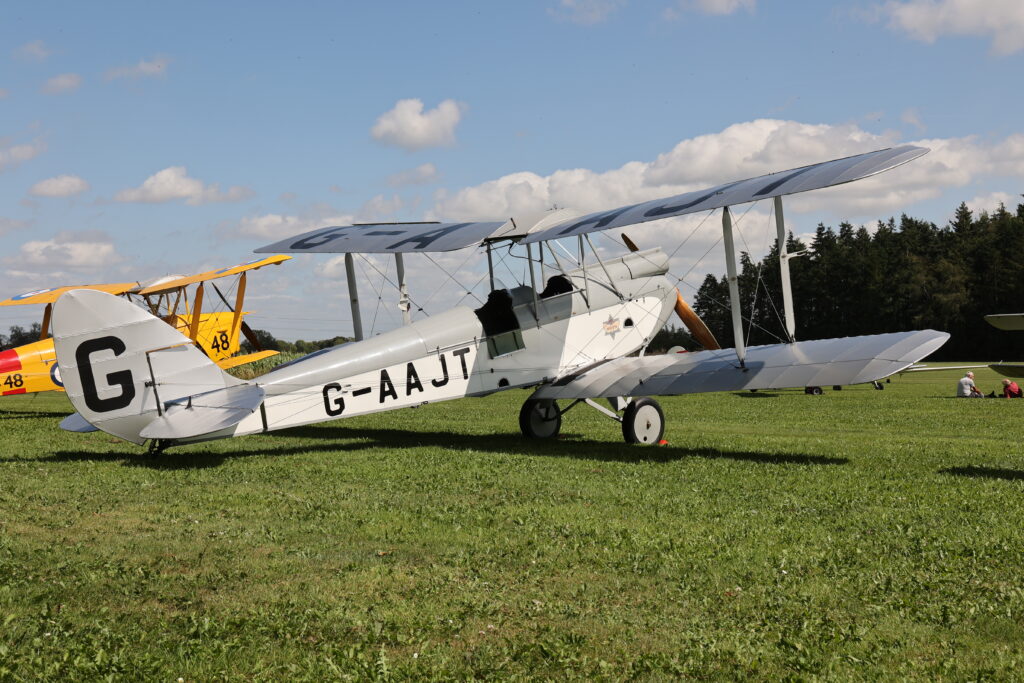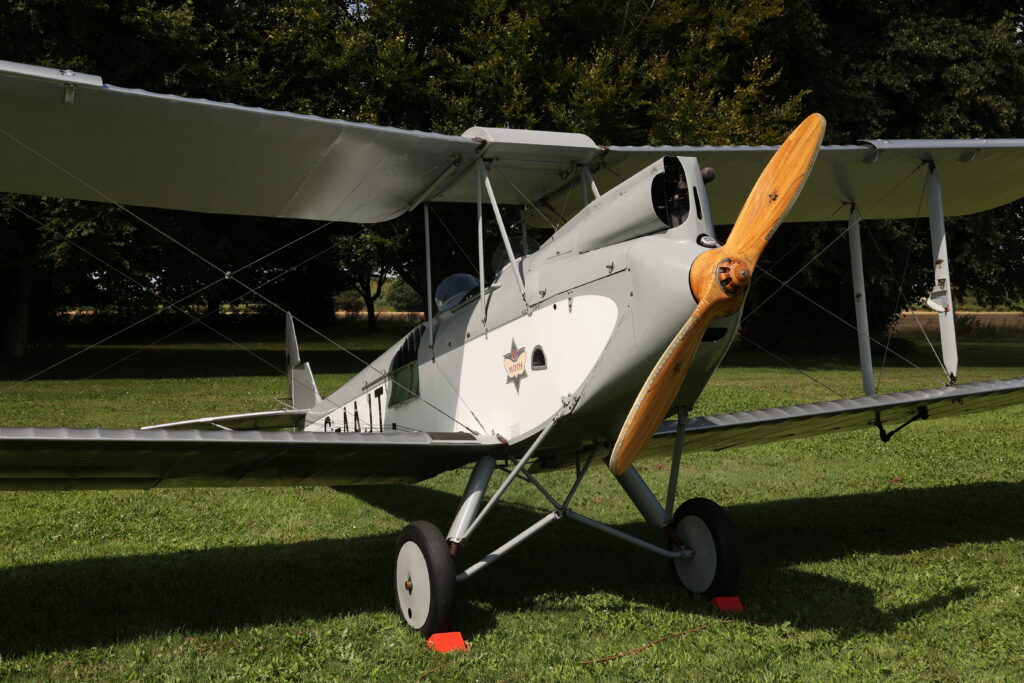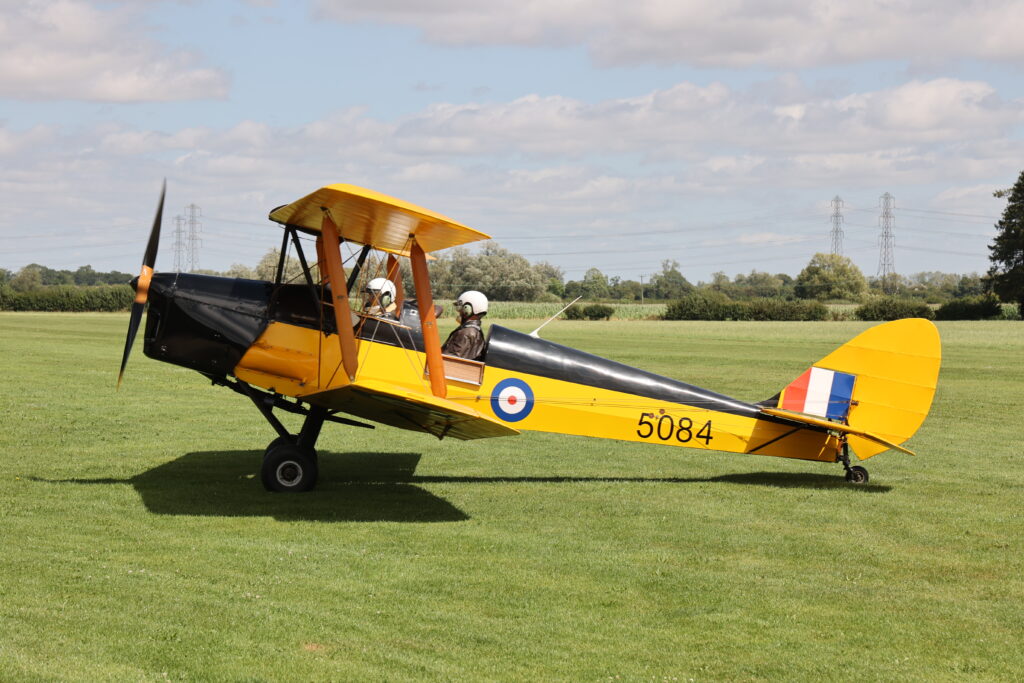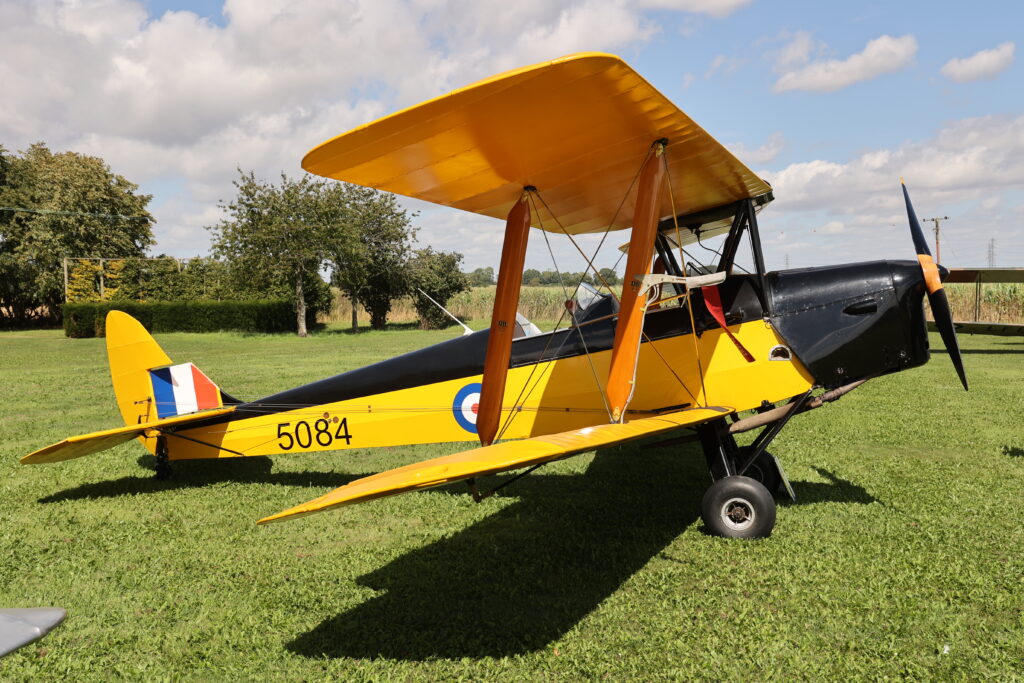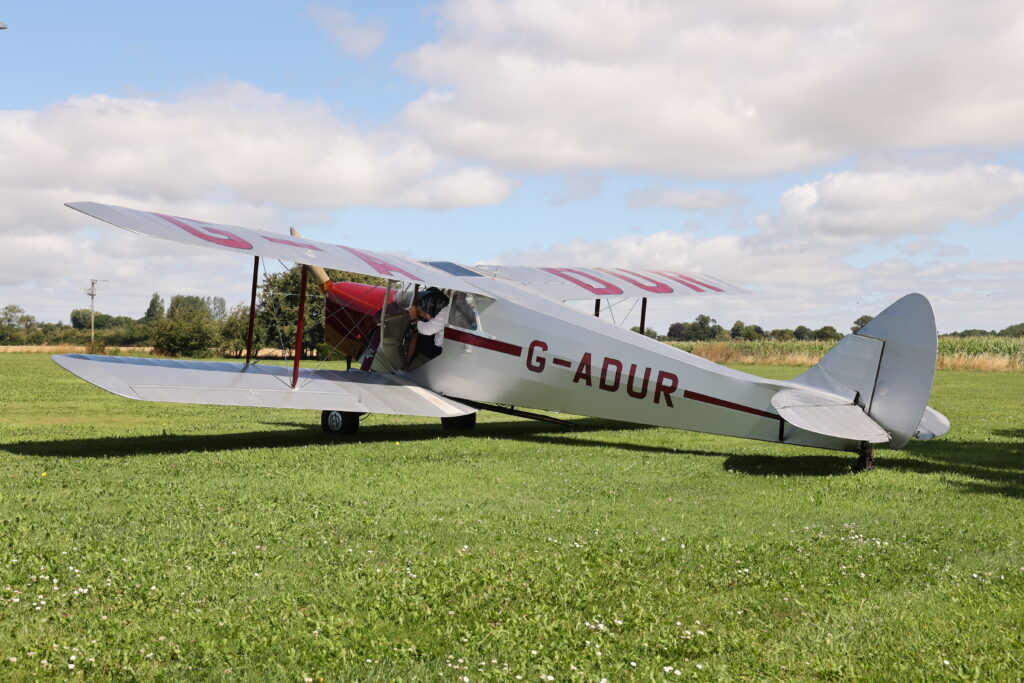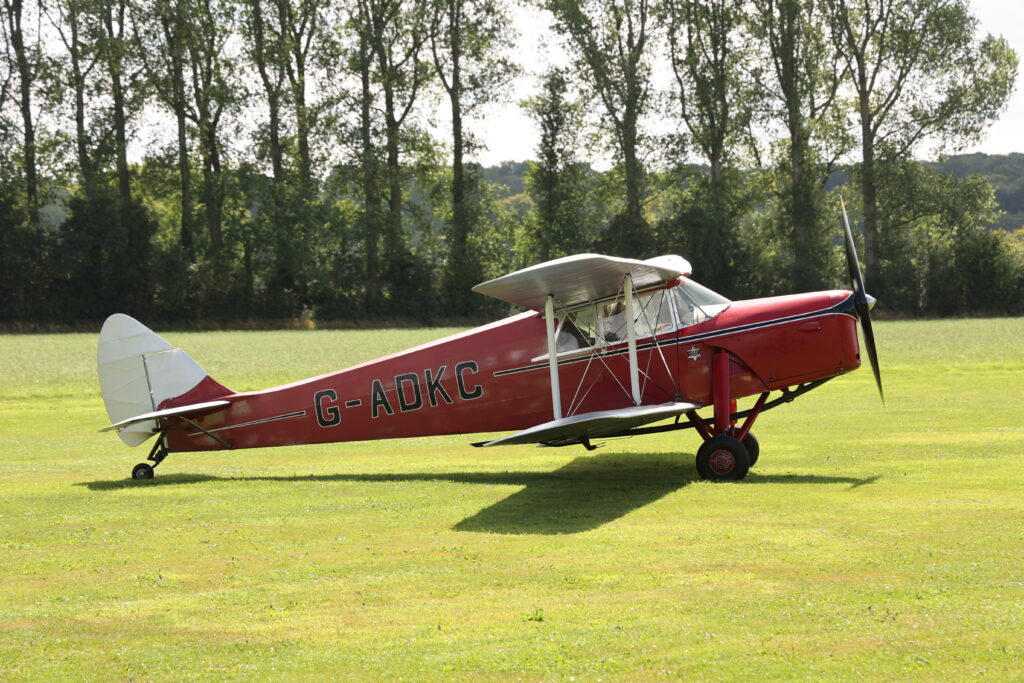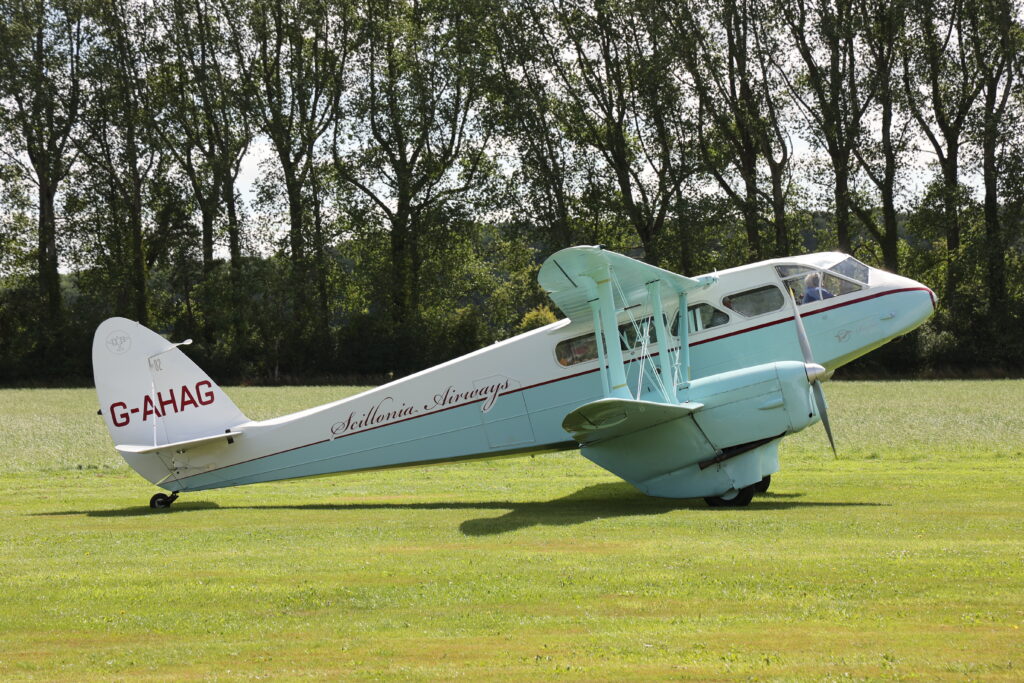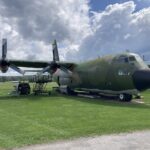By Nigel Hitchaman The de Havilland Moth Club hosted their annual fly-in at Oaksey Park airfield this year, a charming grass strip. Despite the warm and sunny weather, a strong, blustery wind deterred some expected aircraft from attending, as it posed challenges for takeoff and landing at their home bases. However, safety took priority. Many other owners and enthusiasts made their way by road, contributing to an enjoyable day. The event also marked the launch of Moth Club founder Stuart McKay’s latest book on Cabin Moths, which covers the history, development, and production of the DH80 Puss Moth, DH83 Fox Moth, DH85 Leopard Moth, and DH87 Hornet Moth, as well as details on surviving examples. Published by Air-Britain, it’s a must-have for enthusiasts of these types.
Additionally, three newly restored Tiger Moths were showcased.
G-DHBZ: This aircraft has been under restoration by the Classic Aeroplane Company at Oaksey for several years. Recently assembled and rigged for the first time, G-DHBZ has a storied history. Originally owned by the RAF Museum, it was moved to Hendon in 1971. Unfortunately, while in storage, it was set on fire. The remains were sold, and the aircraft appeared on the UK civil register in 1995, passing through several owners before significant restoration progress was made.
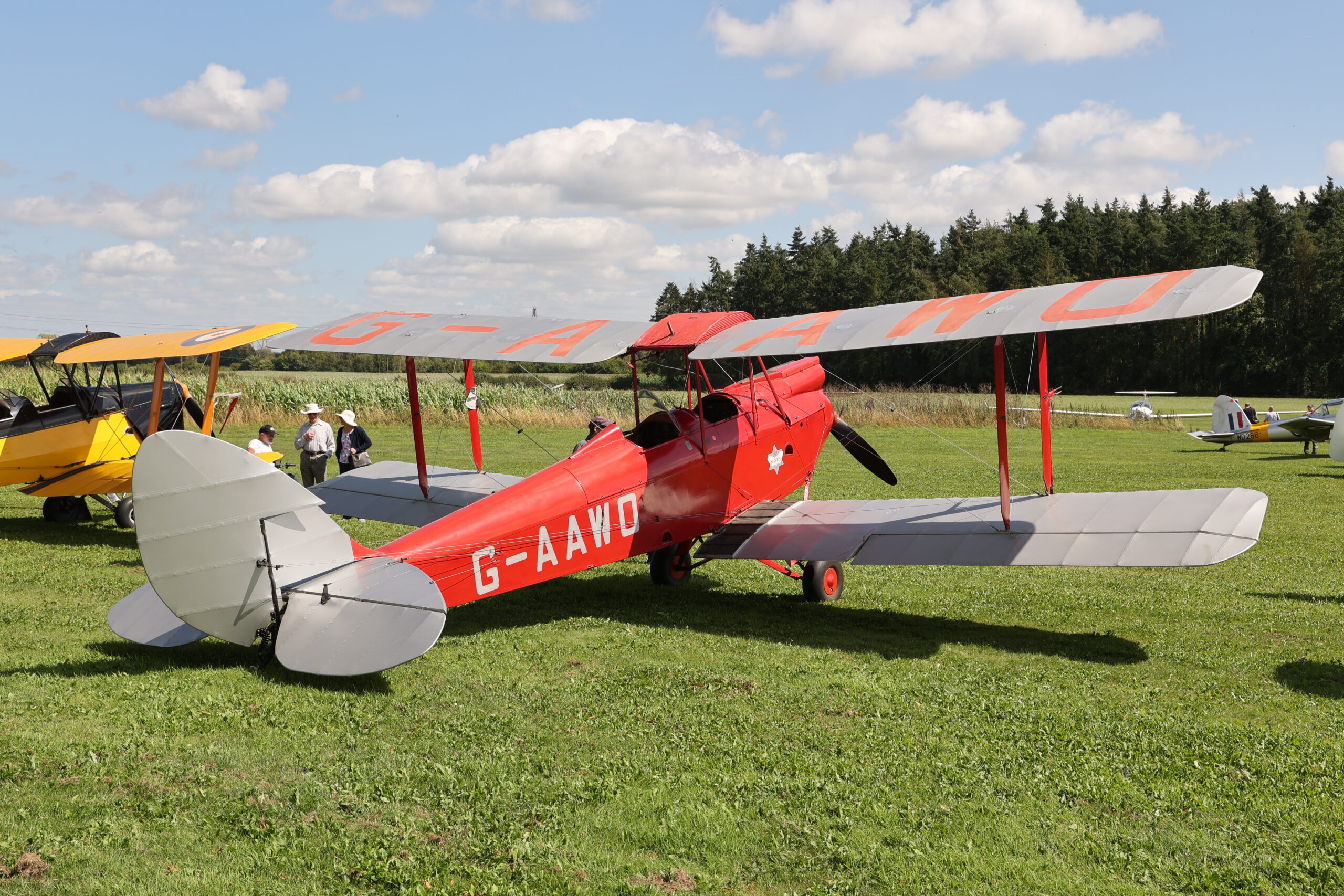 G-AAJT DH60G Gipsy Moth: This Gipsy Moth, the most recently restored in the UK, has been flying since 2011. It has an intriguing history, having been exported to the USA in 1929 as NC947M. The aircraft changed hands several times until its Certificate of Airworthiness expired in 1938. Aero Antiques acquired the remains, and restoration began in the early 2000s, later completed by Paul Groves for Malcolm Paul.
G-AAJT DH60G Gipsy Moth: This Gipsy Moth, the most recently restored in the UK, has been flying since 2011. It has an intriguing history, having been exported to the USA in 1929 as NC947M. The aircraft changed hands several times until its Certificate of Airworthiness expired in 1938. Aero Antiques acquired the remains, and restoration began in the early 2000s, later completed by Paul Groves for Malcolm Paul.
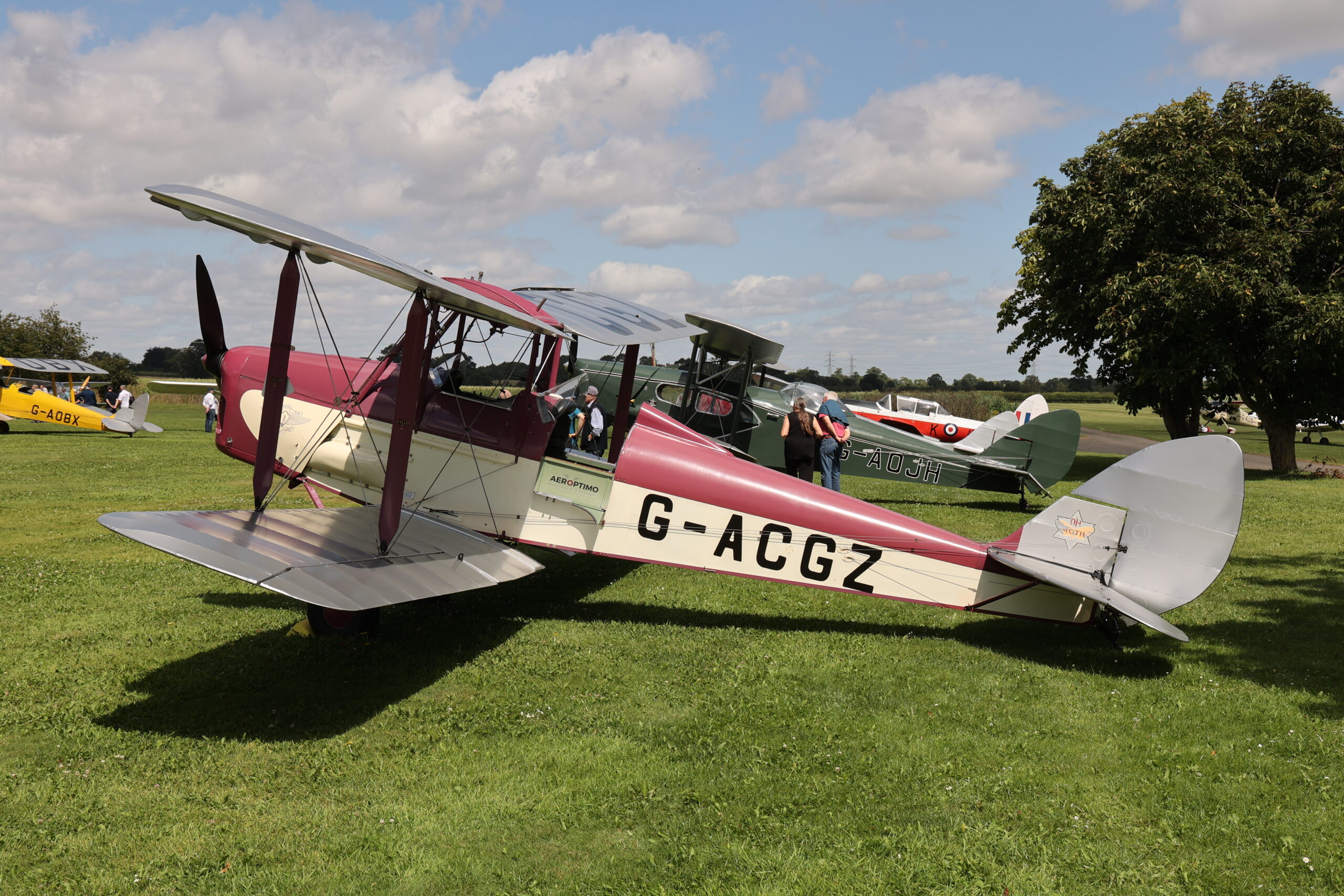 G-AOJH DH83C Fox Moth: A post-war Canadian-built example, this aircraft was originally exported to Pakistan but was flown to England in 1955. It has been based there ever since, initially used for joyrides at Southport Beach and later at Bournemouth and Shoreham, before being sold and restored by Cliff Lovell in the early 1990s.
G-AOJH DH83C Fox Moth: A post-war Canadian-built example, this aircraft was originally exported to Pakistan but was flown to England in 1955. It has been based there ever since, initially used for joyrides at Southport Beach and later at Bournemouth and Shoreham, before being sold and restored by Cliff Lovell in the early 1990s.
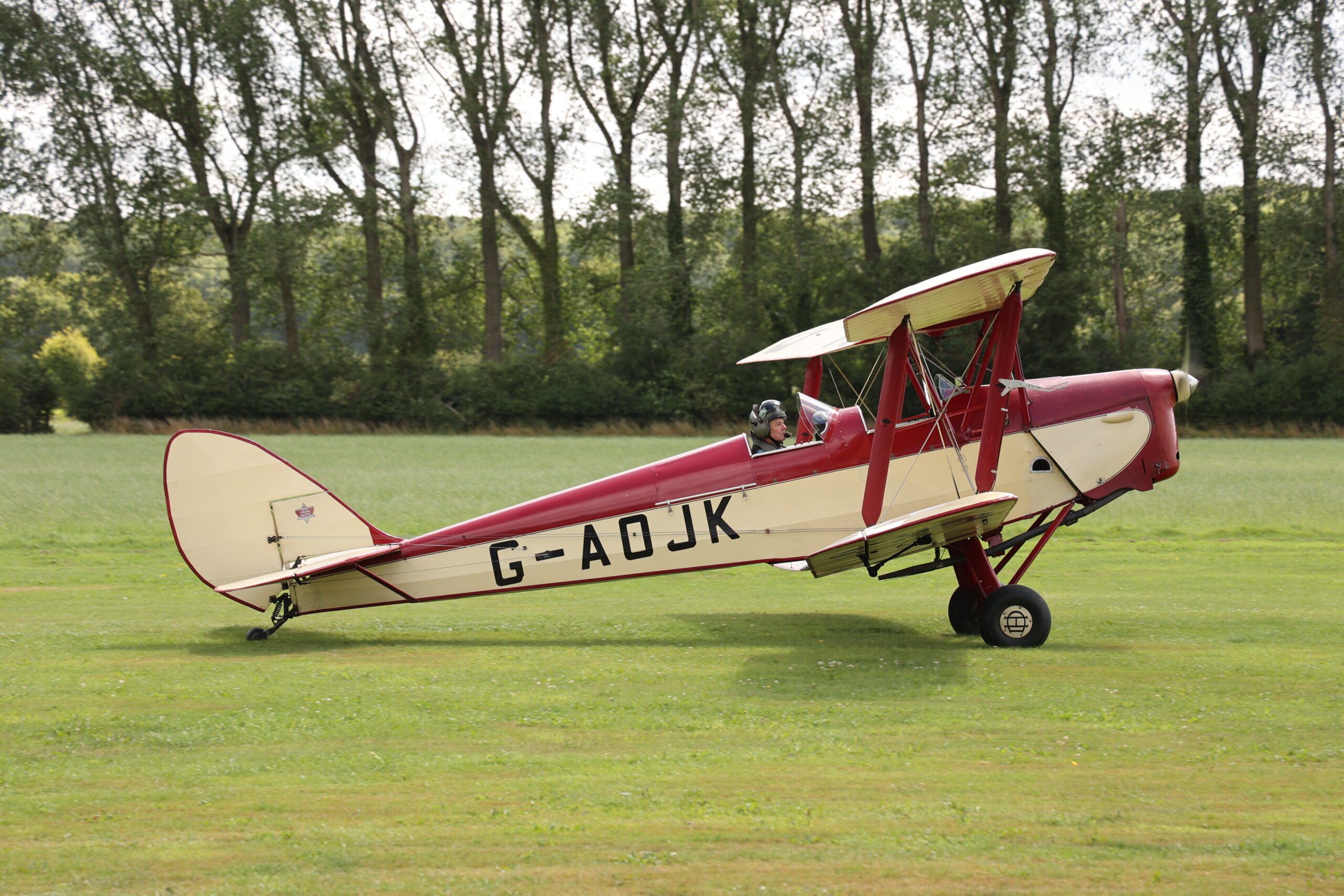 G-BLUZ (RAF serial LF858) DH82B Queen Bee: The Queen Bee is a variant of the Tiger Moth with a wooden fuselage, used as a target drone during World War II. This aircraft is the only one of its kind still flying, having been restored in the 1980s.
G-BLUZ (RAF serial LF858) DH82B Queen Bee: The Queen Bee is a variant of the Tiger Moth with a wooden fuselage, used as a target drone during World War II. This aircraft is the only one of its kind still flying, having been restored in the 1980s.
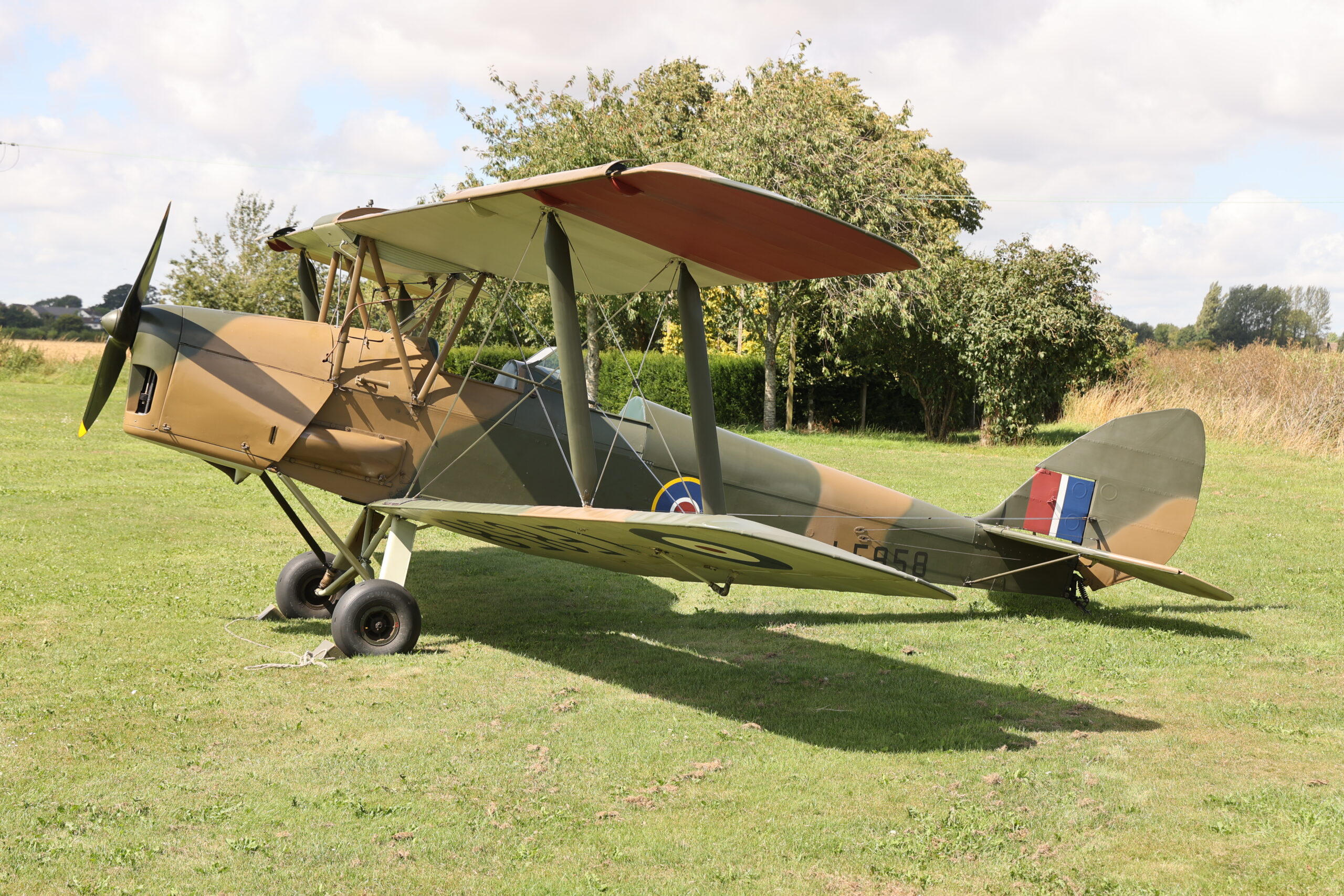 C-FCTK (RCAF 5084) DH82C Tiger Moth: A Canadian-built example, this Tiger Moth originally featured an enclosed cockpit, which was converted to an open cockpit at some point. Imported from Canada, where it was registered as CF-CTK, it was restored by Tony Palmer over several years and has been flying again for the past 5 or 6 years.
C-FCTK (RCAF 5084) DH82C Tiger Moth: A Canadian-built example, this Tiger Moth originally featured an enclosed cockpit, which was converted to an open cockpit at some point. Imported from Canada, where it was registered as CF-CTK, it was restored by Tony Palmer over several years and has been flying again for the past 5 or 6 years.







